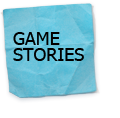
Introduction
The work of a designer is as varied as the interpretations of the term 'designer' itself. In the gaming industry, the term is perhaps even more ambiguous than in other fields as it's used as a common descriptor for gameplay-, balance-, user interface- and level designers, story/script writers and a designer also often serve the role as producer and pitcher of game ideas (both to investors and the development team). As a designer, your need to be knowledgeable in all these fields, which is both challenging and interesting as your work duties during a development project will be very varied. The literature described here will help you gain a basic lay of the lands when it comes to how to compose a game from start to finish; but we encourage you to explore all other aspects of game development to gain an understanding of the work processes of your colleagues. And most important of all, read as much as you can about the human brain; understanding how your audience works will teach you how to better tug on their emotional, cerebral and instinctual strings to give them an exceptional gaming experience.
 |
Rules of Play Eric Zimmerman & Katie Salen 2003 |
Having a firm grip on how game rules and mechanics work and affect a playing experience is obviously a crucial skill for any game designer, and that's exactly why this book is an important read. Rules of Play is essential as it helped create the much needed vocabulary we now use to describe game mechanics. This book will help you make informed decisions when designing your game mechanics and it will improve your abilities to convey your design ideas better to your team and your audience.
 |
Fundamentals of Game Design Ollie Johnston & Frank Thomas 1995 |
Fundamentals of Game Design cover the areas of level design, character and story writing and the structure of different game challenges and rule sets and anchor all of its guidelines with practical examples of implementation. Beyond covering all aspects you need to have a firm understanding of to make a great game, they also delve into how to successfully market and pitch your game or game idea to investors, publishers and your audience.
| A Theory of Fun for Game Design Raph Koster 2004 |
Raph Koster's exploration of what makes some experiences fun and others dull should be a staple in any self-respecting game designer's bookshelf. It's a quick and entertaining read (with charming illustrations by Raph) and pinpoints the illusive nature of 'fun' in a very interesting way. If you've wanted an explanation of why some games, sports, puzzles or pieces of music manage to provide you with months or years of joy while others seem to become trivial and dull within a few hours, you'll walk away from this book thoroughly enlightened.
 |
The Art of Game Design; a Book of Lenses Jesse Schell 2008 |
By forcing you to ask questions regarding your game (and the games you've played and loved/loathed), the art of game design will encourage you to constantly dissect and understand game systems, stories, characters and mechanics on a profoundly deep level. This book has a series of flash cards associated with it, which provide great thought exercises and lessons for game designers.
| Flow; The Psychology of Optimal Experience Eric Zimmerman & Katie Salen 2003 |
As a game creator, your job (and hopefully your ambition) is to create experiences that engage and stimulate your players. The theory of flow is a perfect framework for understanding how to do this effectively and it will make you look at the components of any challenge or activity in a very different light. This book makes for an even more mind-blowing read if you couple it with A Theory of Fun. If you want to check out a condensed version of flow theory in the context of games, look up Jenova Chen's thesis (here)


